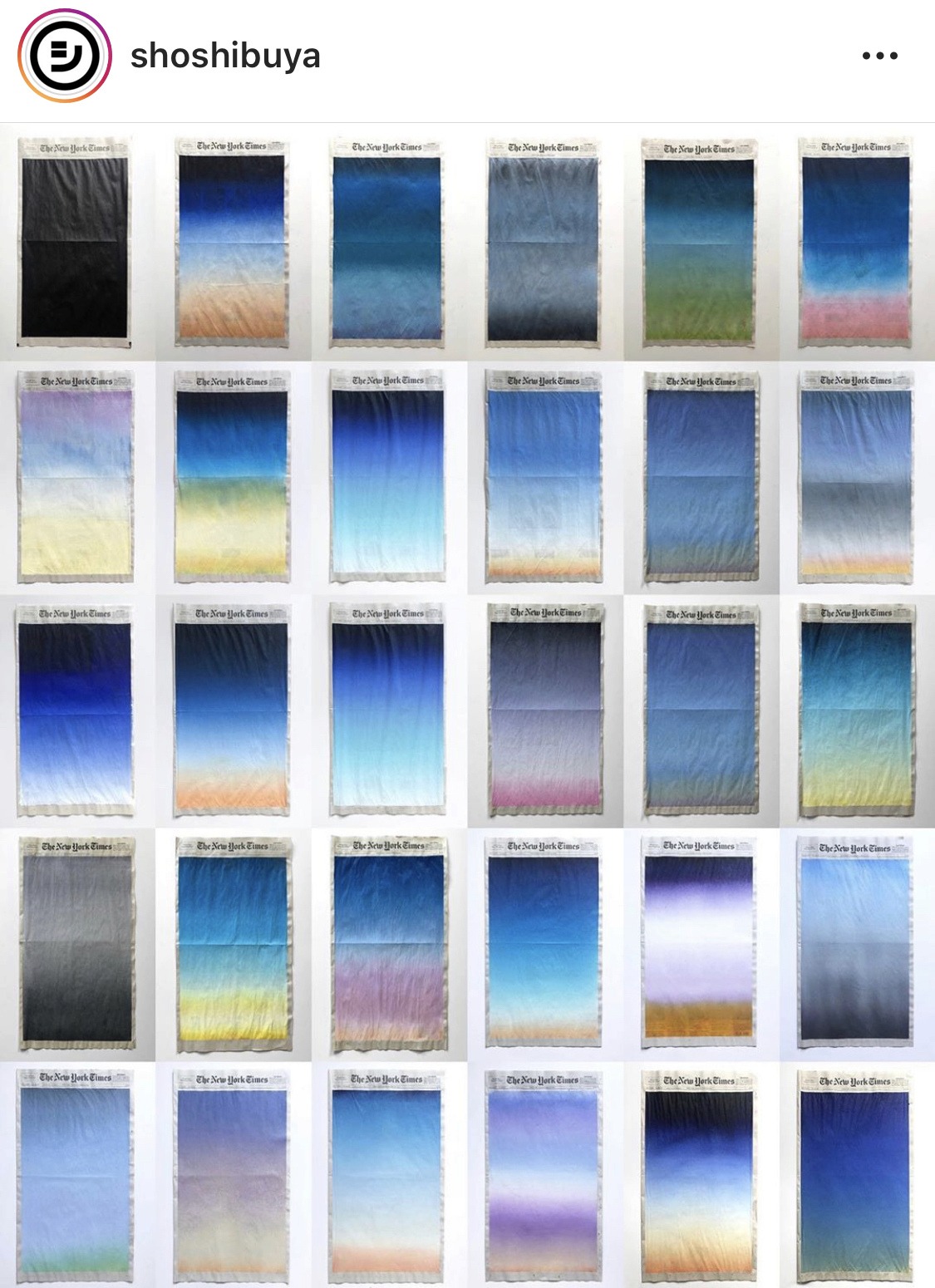When Sho Shibuya began painting April sunrises onto the front page of the New York Times each day, the images were small rectangles in the middle of the day’s headlines. The colourful gradients, which reflected what Sho had seen outside his window that morning, were a reminder of the beauty in the world and an antidote to the intensity of the daily news.
By May, as the coronavirus spread across the world, Sho’s paintings began to fill the front page. On the 25th, under a headline reading, “US Deaths Near 100,000”, Sho painted a brilliant blue and white sky, covering a long list of names of the deceased. Through this contrast, Sho reminded us that we were part of a shared moment and that, more widely, there was hope beyond the chaos. By painting the sunrise each day, he was reminding us to slow down and look up.
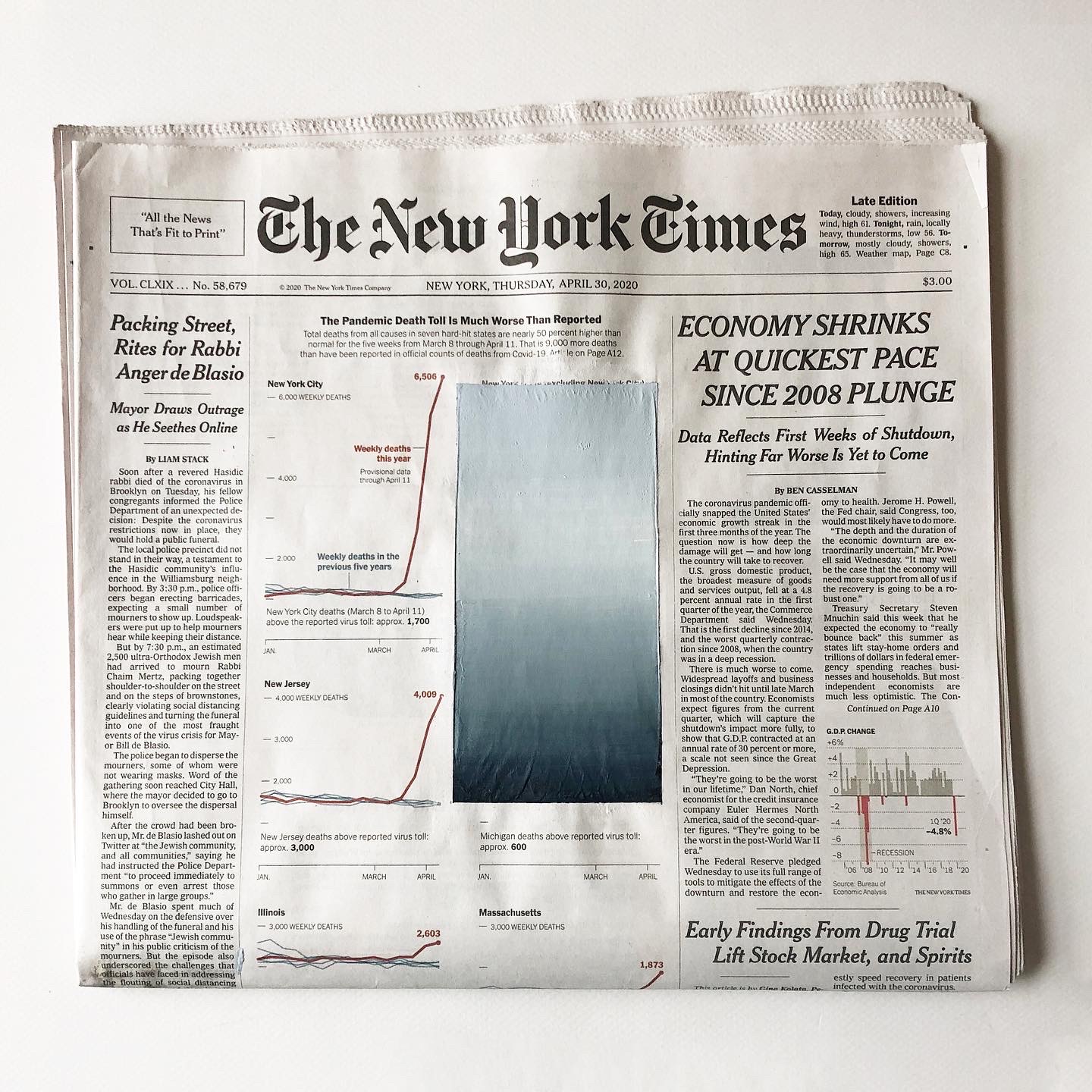
As well as his daily sunrises, Sho also uses this format to comment on current events. In early June he painted a cover black and accompanied the image on Instagram with the caption, “Black Lives Matter”. In early August his sunrise image was punctured with seven holes representing the bullets shot at Jacob Blake and on 8 October, the infamous ‘debate-fly’ graced an otherwise white background. When he paints an apple or a New York Times font ‘T’ to mark the passing of Enzo Mari and Ed Benguiat, it’s like a beautifully, simple tribute that needs no words.

With more and more people responding to his paintings, we spoke to Sho, founder of the brand design agency Placeholder, about his background and the motivation for his work.
You grew up in Japan, can you tell us a little about that?
I spent three-quarters of my life in Chiba, Japan. Some of the lessons I learned really highlight the difference between Japan and the USA. For instance, we wore uniforms and followed many rules. In school we learned about the principle of ‘gaman’, which essentially involves putting all others before yourself. At work, we always used honorifics to communicate with colleagues or clients to show respect. Between age and titles, there is a pretty strict hierarchy that creates more complicated rules around communication. The USA is more individualistic and everyone has the right to speak up. People value straightforward communication so getting from point A to point B is faster.
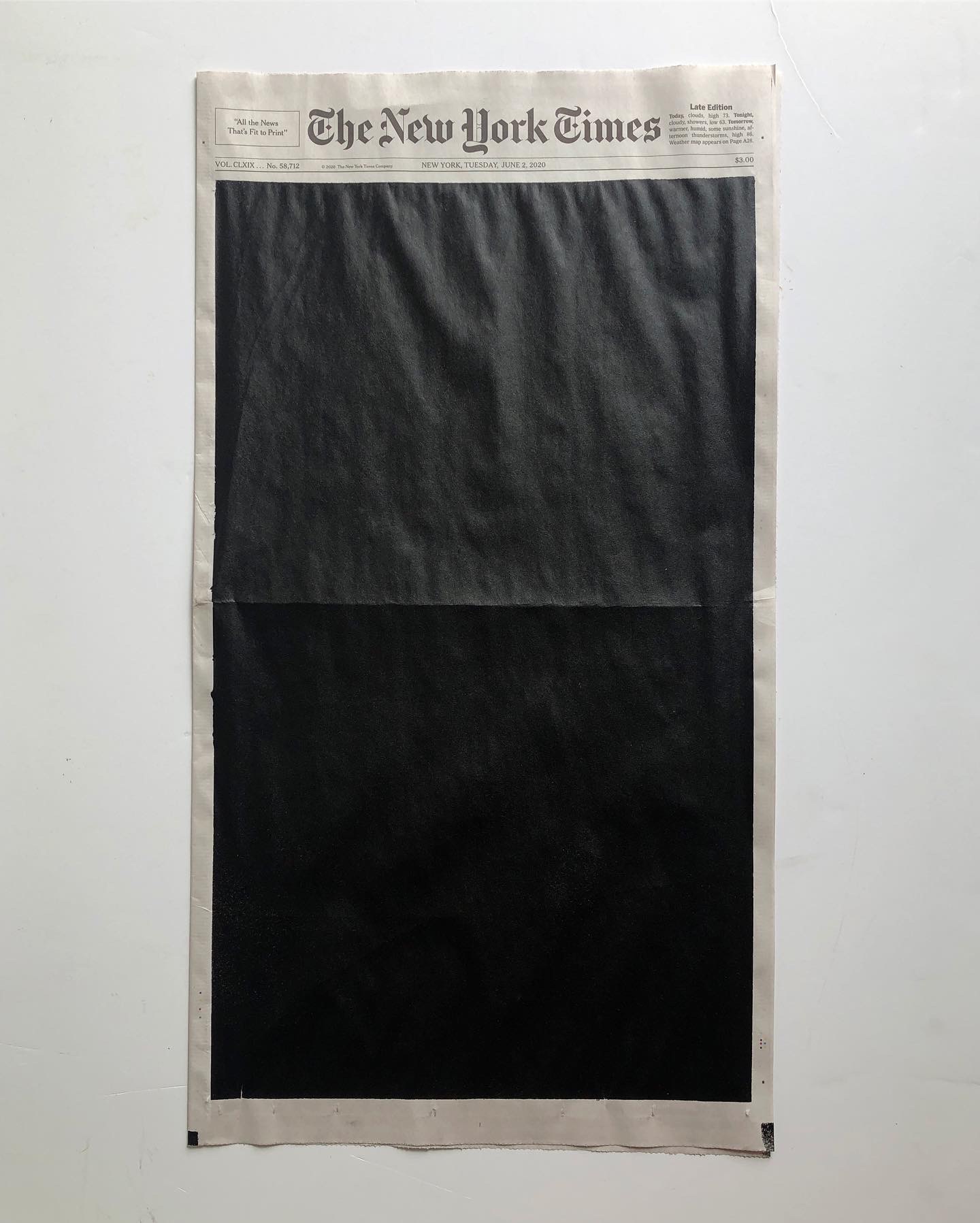
Was that behind your decision to move to New York?
In Japan it’s tough to get the opportunity to work for a well-known company or work with a prestigious client without a college degree. I considered spending my savings on getting an art college degree or taking on a different challenge in a new country. I chose the latter and have lived and run my agency in New York since 2011.
Your New York Times sunrise project is so beautiful. Why do you think it has caught the attention of so many?
Probably because we need hope. There is breaking news every day, but if you look up, the sky is always beautiful. It’s a contrast between the calm of the sky and the chaos of everyday life, especially with today’s politics.
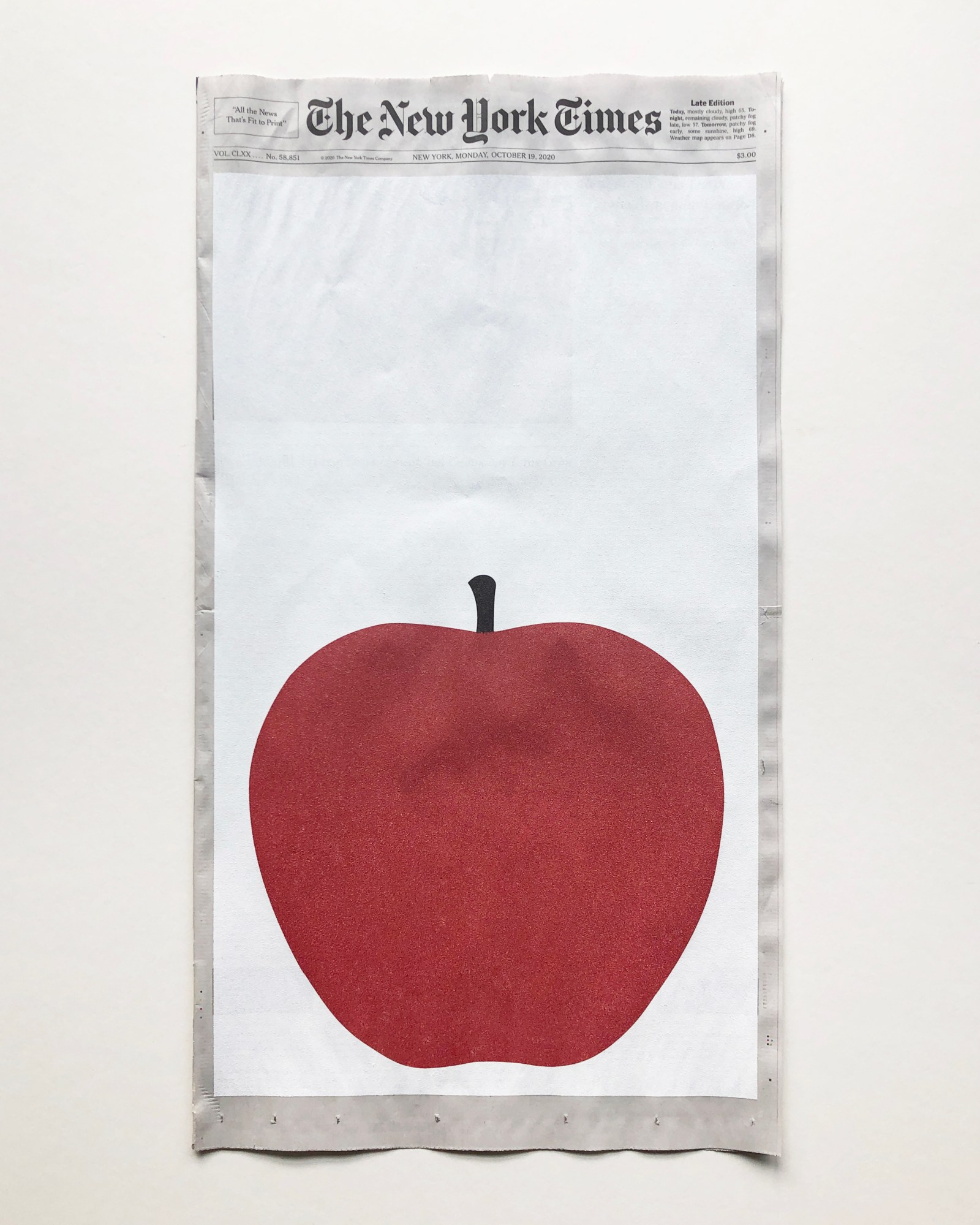
Will you continue to paint these? What's your plan?
Yes, I feel that capturing every day is the most important thing. I like capturing moments and having a daily routine helps me maintain a rhythm to my life. I paint every sunrise, and I treat that as a meditation as I prepare to face the reality of the world as it’s shown in the newspaper. Once it is safe to gather in person again, I hope to share the paintings as a way to look back at this period.
Your fly cover was so perfect and since then you’ve also marked other significant events with New York Times covers.
In the beginning, I just wanted to capture everyday moments visually, like a diary. Now, if strange or significant things happen, I try to capture those as well, to raise awareness and hopefully to start a conversation.
How did you feel when Patti Smith wrote, ‘fantastic’ in response to your fly cover on Instagram?
I’ve never met her, but it’s such an honor to get a public compliment from somebody I have such huge respect for.
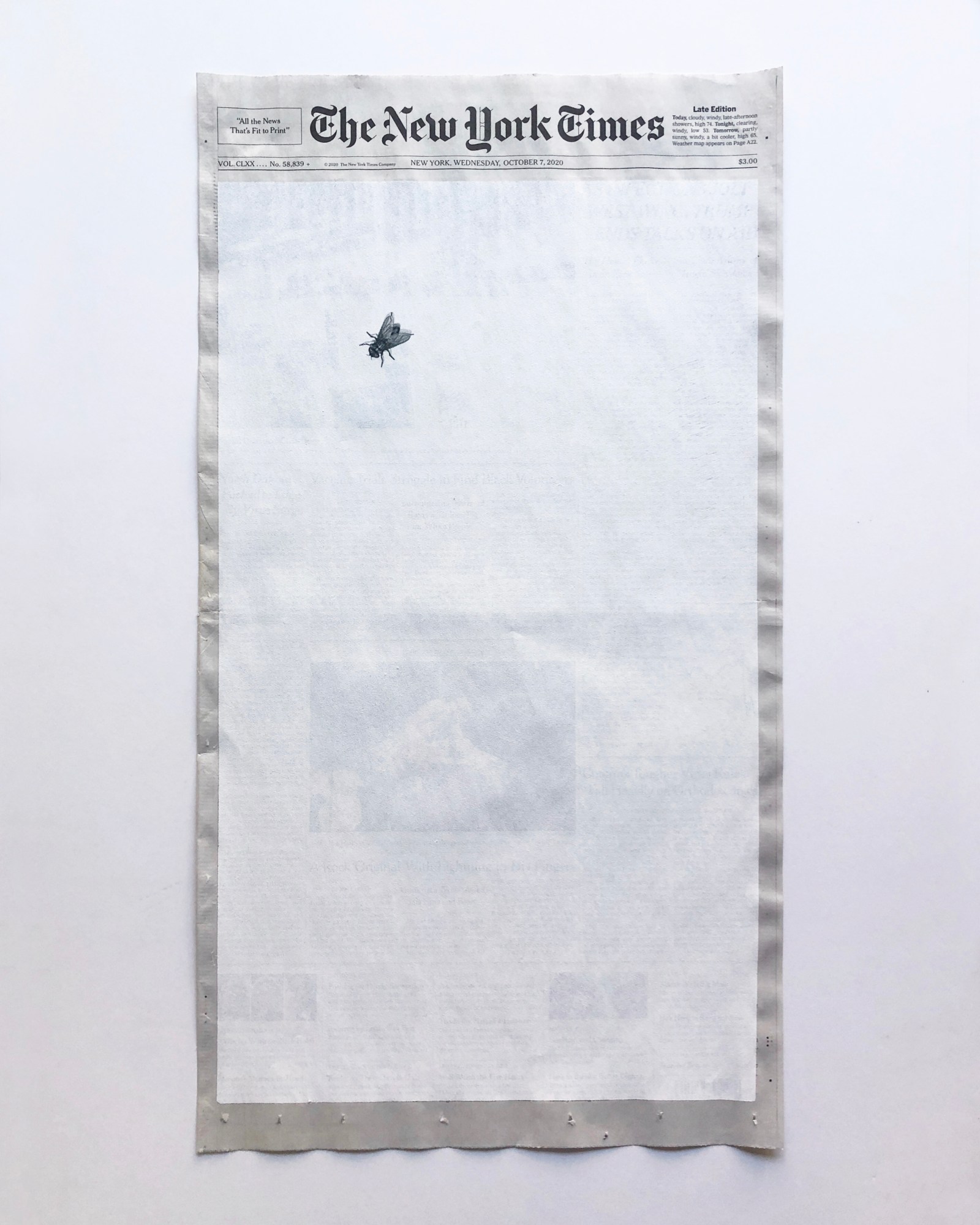
Who else have you noticed responding to your work?
Incredibly, a lot of people I respect have reacted to the work. I feel particularly honoured to hear comments from people who work at the New York Times. I feel like I have a dialogue with the front page every morning, and I’m glad some of them look forward to my interpretations each day. One person, who works in customer service, told me a story about a customer who called because they saw my work somewhere and thought it was actually that day’s print edition.
What are your plans and hopes for the future?
I hope that after the pandemic subsides, people will continue to express some of the generosity and peace we discovered in ourselves during some of the darkest days, and I hope my work plays a role in perpetuating that.
